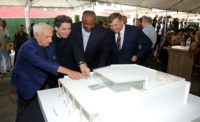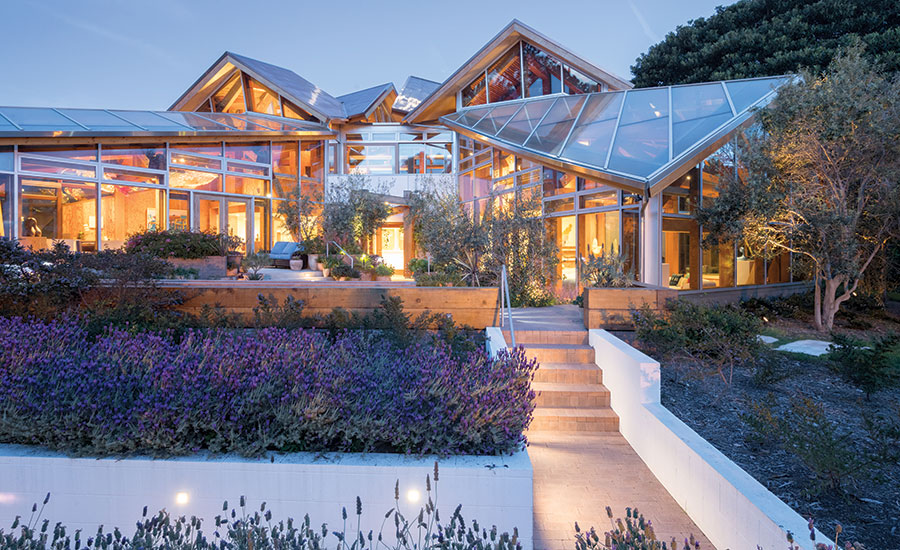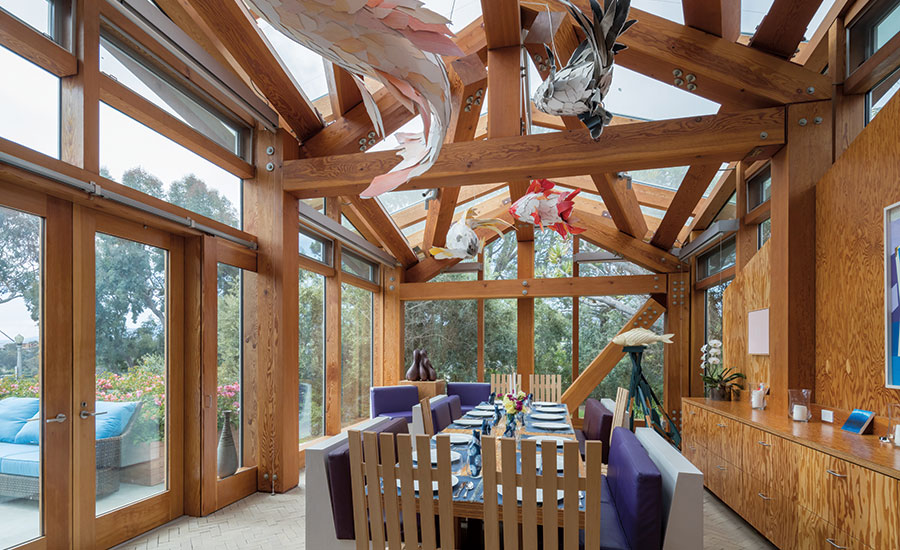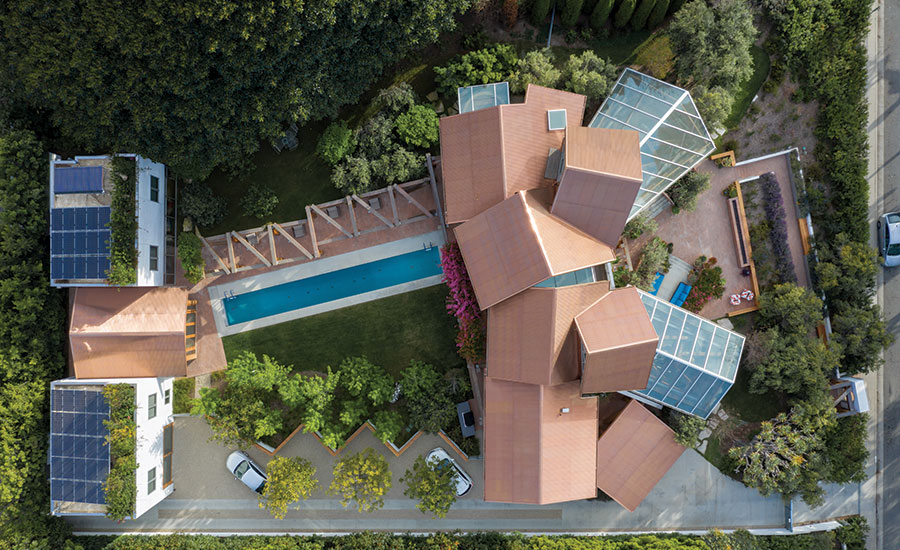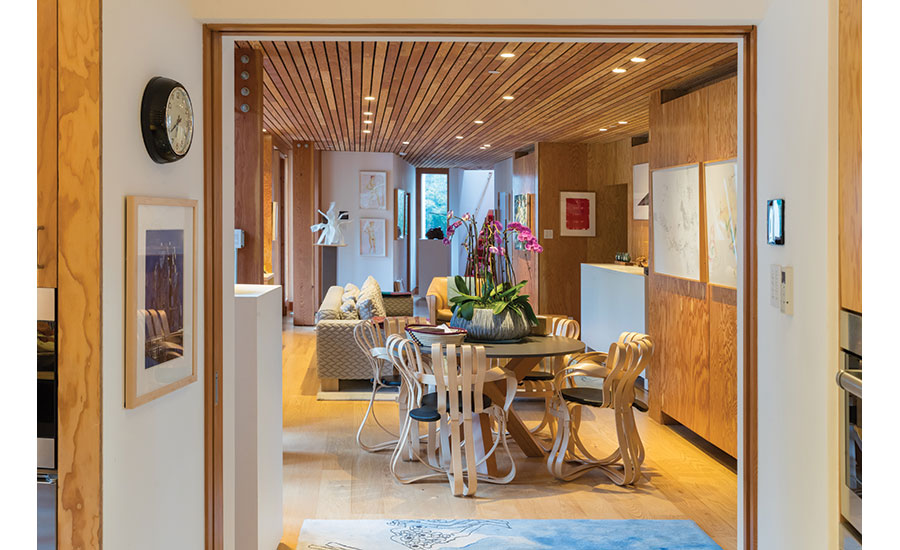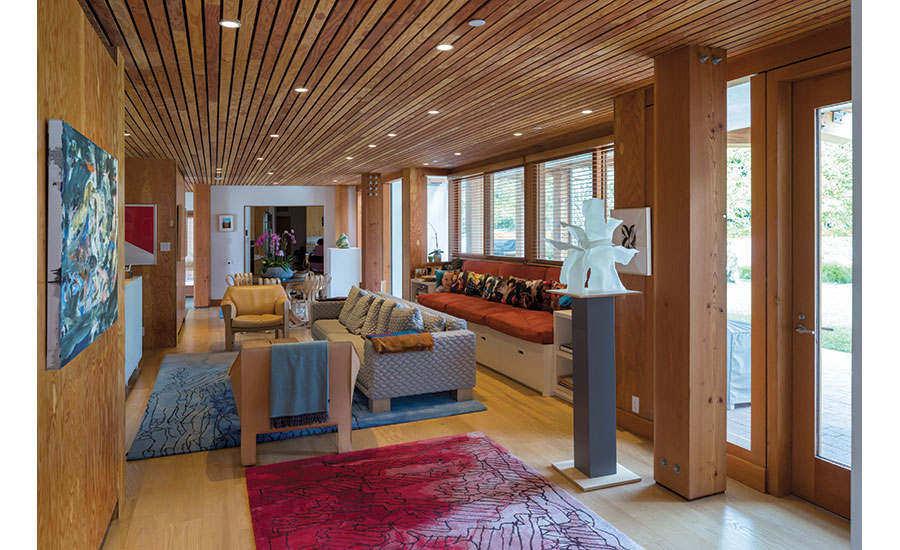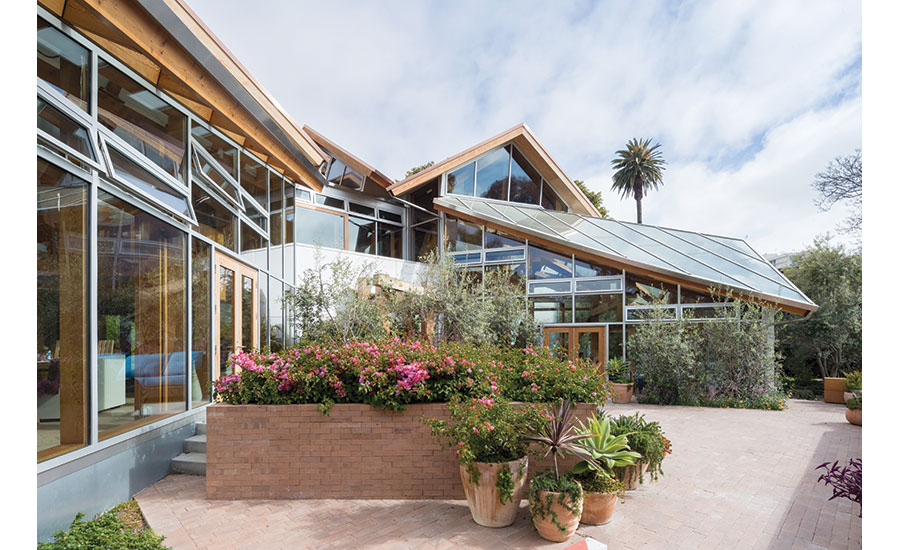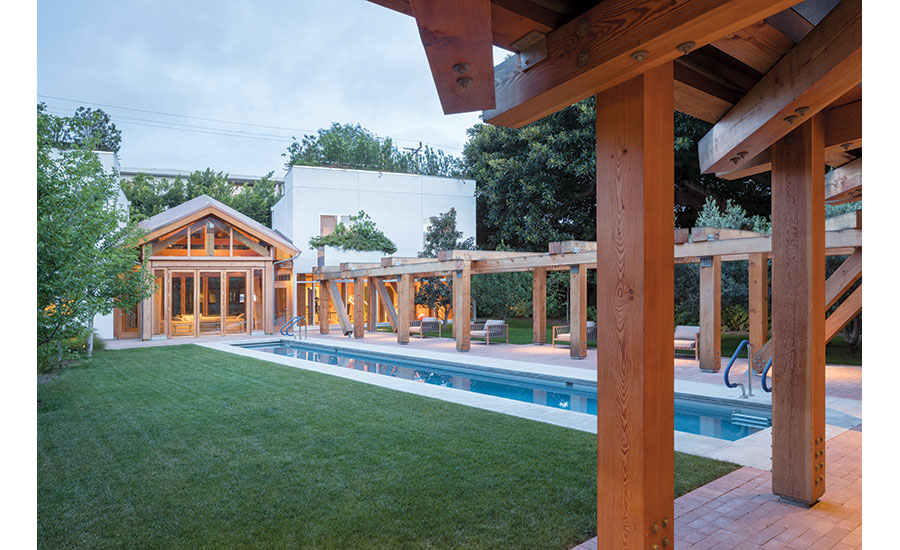Exclusive Look Inside Frank Gehry's Home
Santa Monica, California

A profusion of lavender under olive trees animates the entrance terrace.
Photo © Iwan Baan

Gehry’s famous light fixtures hang in the dining room.
Photo © Iwan Baan

In a birds-eye view, the main house is to the right, while the guest wings, with solar panels, are to the left.
Photo © Iwan Baan

The lofty living room is sunk into the site for a cozy intimacy.
Photo © Iwan Baan

The family room is modestly scaled.
Photo © Iwan Baan
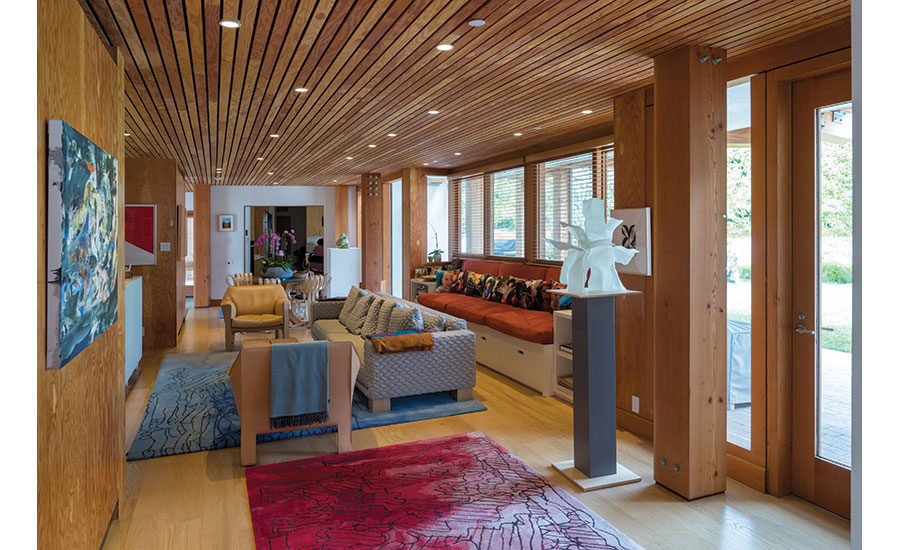
The family room is modestly scaled.
Photo © Iwan Baan

Outdoor spaces, including the terrace in front of the guest wings, comprise what Gehry calls the “entertainment plaza.”
Photo © Iwan Baan

Outdoor spaces, including the lawn by the lap pool, in front of the guest wings, comprise what Gehry calls the “entertainment plaza.”
Photo © Iwan Baan








Frank Gehry’s imposing new house in Santa Monica might seem to be the polar opposite of the “unfinished” look he sought for his renovation of a modest 1920s Dutch colonial, also in Santa Monica, four decades ago. The current residence was designed in collaboration with his younger son, Sam, who has been active in the firm since 2008, when Gehry entrusted him with the creation of the Serpentine Gallery Pavilion in London’s Hyde Park. The new house bears little resemblance to Gehry’s youthful venture, which instantly became a landmark of residential design. Yet there are a surprising number of similarities between the two.
For the renovation, in 1977, Gehry worked with Paul Lubowicki as his design partner; Lubowicki was then a young man at the beginning of his career, and the relationship between the two was similar to the one that Gehry enjoyed with his son in 2010. Sam used as a starting point the wood framing and large, crisscrossing beams in one of his dad’s models for the Serpentine. After many years of toying with designs for a new house, it was Sam’s involvement that made Frank and his wife, Berta, decide to proceed with a move to the prime 0.8-acre Santa Monica property Gehry had acquired around 2009 as an investment for their two sons. Sam considered Berta to be the client, and Gehry admits that “Sam is easier to work with than I am. I did nothing except plan with Berta how we would use the house.”
Both houses rely on timber (plywood for the older house, Douglas fir for the new one). Although the two wings of the new residence are large (10,000 square feet in total), in comparison to the old house (4,000 square feet), the main wing of the new house is only 1,000 square feet bigger than its predecessor. In fact, the modest dimensions of the family room and the master bedroom are exactly the same as in the older building.
Just as Gehry had played with unusual materials and forms for the early renovation, Sam wanted to test his ideas about sustainability for the new project. The house is heated or cooled primarily by radiant floors (fed by nine geothermal wells), ventilation, and shading. These can be supplemented by gravity walls—cavities in the walls that contain vertical pipes for cool or warm water, and an airspace. Solar panels and solar water heaters cover the guest wings’ roofs. Gehry confesses that they are still fine-tuning the system: “It was a tricky experiment and is not yet perfect.”
Oriented to the northeast and northwest of the entrance foyer, and facing the street, are the dining room and living room, both dominated by heavy, intertwined timber beams that contrast dramatically with large expanses of glass. Gehry marvels at the intricacy of what he describes as “the beams’ connections to connections.” Every room enjoys magnificent views across the garden to the Santa Monica Canyon, but the two men wanted the views to vary. Thus the dining room is slightly elevated, with vistas that stretch to the ocean, while the living room sinks gently into the site for a more intimate outlook, toward Pacific Palisades. Both spaces have 20-foot-high ceilings, and doors that open to the garden. Accessed by an elevator and stairs, the second level contains a master suite. Gehry envisioned the interior balconies on this level, which overlook the ground floor and the ocean, as sites where musicians could play to the rooms below.
One specific request was for rooms that the Gehrys could inhabit at different times of the day. In contrast to the soaring living and dining rooms, cozy reading nooks at the east and west on the two levels catch rays of the rising and setting sun. A small study west of the ground-level family room provides an additional intimate space.
Creating the house was a family affair beyond having Sam as the design partner and designer of the furniture: his wife, Joyce, created all the carpets, and Berta chose the kitchen’s colorful Granada-tile floor. Further personalizing the home are Gehry’s famous fish lamps, which hang from the dining room ceiling, and numerous artworks, most of which were gifts from artist friends and from the Gehrys’ older son, Alejo, a painter.
A 60-foot lap pool separates the North House from the smaller South House, which contains two guest rooms and a suite for longer-term visitors, a changing room, a gym, and a large concert room (another request from Frank and Berta). Gehry calls the patio between the two structures the “entertainment plaza”; it too has a stunning view of the ocean. (Landscape architect Laurie Olin added to the existing sweetgum trees—a species Gehry favors for its deep red leaves in autumn—and also chose Chinese cinnamon trees for their golden blossoms, while Spanish lavender, California lilac, and mission olive trees bring a profusion of color to the front.) The senior Gehry has already hosted performances in the concert room, one by members of Daniel Barenboim’s West- Eastern Divan Orchestra, the second by musicians from the Colburn School in Los Angeles, for which the architect is designing a new building. They hope to have other musicians—possibly jazz—come and stay at the pavilion.
The angled, gabled roof, clad in a metal that glows almost pink at dusk, and the tilted skylights are unmistakably Gehry. Such resemblances are not unusual in architect father-son collaborations. To I.M. Pei and his two sons, Chien Chung and Li Chung; to Eliel and Eero Saarinen; to César and Rafael Pelli, we can now add Frank and Sam Gehry.


